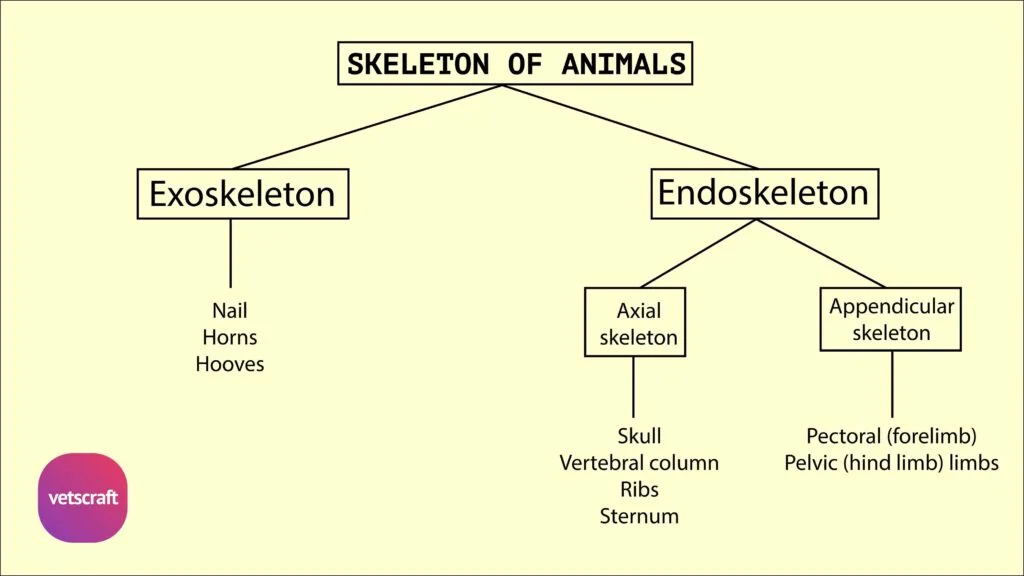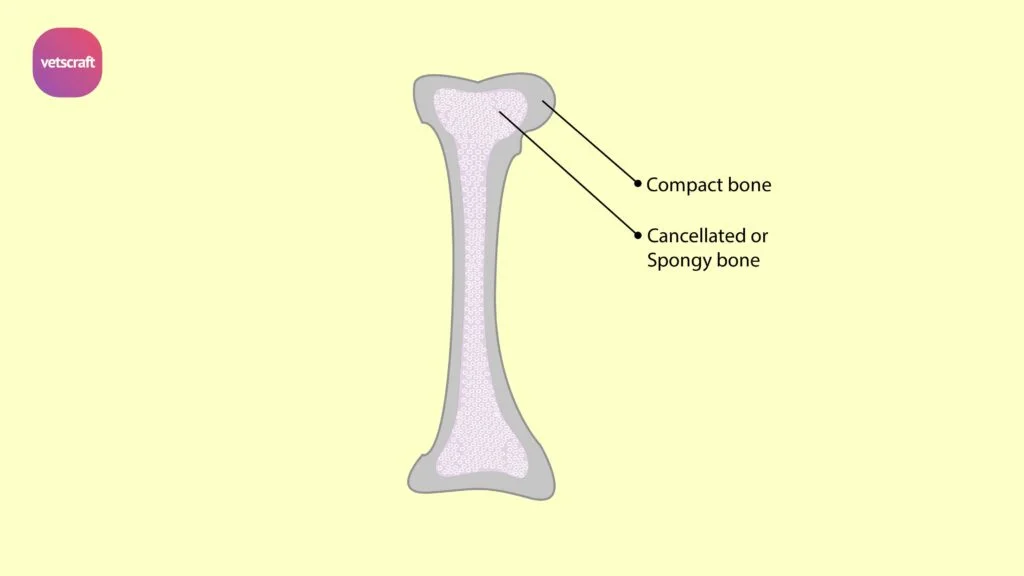TABLE OF CONTENTS
Axial Skeleton of Animals
The axial skeleton of domestic animals consists of the skull, vertebral column, ribs, and sternum.
1. Skull
The skull protects the brain and supports the structures of the face. It is composed of cranial bones (which encase the brain) and facial bones (which form the snout, jaws, and eye sockets). The skull varies significantly among species, particularly in shape and length, depending on their feeding behavior and sensory adaptations.
2. Vertebral Column
The vertebral column extends from the skull to the tail and is made up of vertebrae grouped into five regions: cervical (neck), thoracic (chest), lumbar (loin), sacral (pelvic), and caudal (tail). The number and morphology of vertebrae can differ among species, with horses, dogs, cattle, pigs, and fowl each having a characteristic vertebral formula.
3. Ribs
Ribs are curved bones that articulate dorsally with the thoracic vertebrae and ventrally with the sternum (either directly or indirectly via costal cartilages). They form the rib cage, which protects vital organs such as the heart and lungs. Ribs are categorized as true ribs (sternal) and false ribs (asternal), and the number varies among species.
4. Sternum
The sternum is a flat, elongated bone located on the ventral side of the thorax. It consists of multiple sternebrae and provides attachment points for the ribs and muscles. In birds, the sternum is highly developed into a large keel (carina) to support the flight muscles.
Comparative Anatomy of the Axial Skeleton
In comparative anatomy, the axial skeleton shows adaptations related to posture, locomotion, and environmental demands. For instance, the elongated lumbar region in dogs allows flexibility during running, while the fused vertebrae in birds provide stability during flight. Ruminants have well-developed skulls with horns or horn cores, and pigs exhibit a more compact skull structure.

